Buy or gift a stand-alone digital subscription and get unlimited access to dozens of back issues for just £18.99 / $18.99 a year.
Please register at www.exacteditions.com/digital/cornucopia with your subscriber account number or contact subscriptions@cornucopia.net
Buy a digital subscription Go to the Digital EditionExperience an intimate haven at the crossroads of Europe and Asia. The Bosphorus is the backdrop for this remodelled 19th-century Ottoman palace, with its 170 guest rooms, 25 suites, chic urban spa, fine restaurants and quayside pools, all awash with the light, space and excitement of a water’s-edge location.
Do you remember Ratty’s advice to Mole in ‘Wind in the Willows’? ‘There is absolutely nothing half so much worth doing as simply messing about in boats.’ It makes you wonder if he has been to Istanbul. This city was built for boating. Perched between the Black Sea and the Sea of Marmara, it straddles the dramatic flooded valley which connects them, The Bosphorus.
Viewed from any of its seven hills, the labyrinthine maze of Istanbul comes to an abrupt halt at the water’s edge, giving way to a watery playground for seadogs, fishermen, commuters and tourists.
Despite the staggered fleet fo vast container ships on the Marmara and the ferries on Istanbul’s natural harbour, The Golden Horn, it is on the Bosphorus that boating reaches its chaotic peak. At dawn, when the rest of the city wakes to the echoing of a hundred calls to prayer, the ferries try out a first tentative blast of the horn.
For migrating birds, Istanbul is a crossroads. Their arrival every spring is a joy to behold, and in autumn the departing flocks create a sense of melancholy as they spiral high above the hills of Çamlıca before heading south. Less visible, though no less significant, are fish migrations. Every spring great shoals swim up through the Bosphorus to breed in the deep, cool waters of the Black Sea, returning south at the end of summer to the warmer Sea of Marmara and Mediterranean. These twice-yearly visitors to Istanbul are the stars of the gastronomic world and have made the Bosphorus famous for its fish.
In 1844, Charles White, the author of Three Years in Constantinople and later correspondent of The Daily Telegraph, marvelled at the wealth of fish in the Bosphorus. “The abundance of seafish is remarkable, and the varieties of smaller kinds numerous,” he wrote. “Providence, in its great bounty, has been more liberal in this respect to the Bosphorus than to any other waters in Europe. Many species are unknown to our markets…”
In Turkey, surrounded as it is by four major seas and generously endowed with rivers and lakes, the subject of fish is an immense one. But for the Istanbullu nothing can ever compare with the fish of the Bosphorus.The true Istanbul fish-lover knows exactly which fish is best and when, and how to cook it according to its size and oil content.
Fishing and trading in fish have long been the lifeblood of communities along the city’s shores. The Byzantine fish market was at the entrance to the Golden Horn, in today’s Eminönü Square, next to the Spice Bazaar. And after the Ottoman conquest, when it became the Balkhane. the fish market flourished in the same place for another 500 years. Around it evolved a whole culture, with all the related trades – fishing-tackle makers, weavers of nets, hook-makers, not to mention grocers specialising in salads to go with the fish, lemon sellers, meze shops and tavernas. But in 1958, when the square was rearranged, the Balıkhane had to go. Today the city’s fish market is in Kumkapı, on the shores of the Sea of Marmara.
One of the delights of Istanbul is watching dolphins pass through the Bosphorus. Their smiling playfulness is infectious: people excitedly point them out to each other whenever they appear. They have been sacred since ancient times – and were never to be harmed. Their arrival is also a good omen for the fishermen, as they are known to usher the lüfe, or bluefish, into the straits. The Lutheran chaplain Stephan Gerlach noted that in 1577 shoals of two or three hundred dolphins were seen swimming in the Bosphorus. This year I counted only six.
Lüfer
Nothing remotely resembles the delicate flavour and melting texture of a freshly caught lüfer. A close cousin of the Atlantic bluefish, the lüfer (Pomatomus saltator) is the most popular of the Bosphorus fish and considered the most delicious. The fish changes names depending on its size. The smallest, around 10cm long, is the defne, literally bay leaf; the next size up is a çinekop; at 18–20cm, about the span of a hand, it is a lüfer; and when it reaches 35cm or more it is known as kofana. With its firm flesh, powerful jaws and razor-sharp teeth, the lüfer is a fighter. Fishermen describe it with good reason as dişli, “with teeth” – in other words, it bites back, and the hook has to be removed with utmost care.
Catching this powerful, intelligent fish requires great skill. Live bait is needed, so first one must catch the bait – usually the slender, eel-like garfish, zargana, or possibly small mackerel, anchovies or smelt. Then there is the special fishing tackle, only to be found on the Bosphorus: twenty-four different kinds of hook, and even a silver spoon, and numerous varieties of weight, to be used according to the currents, location, depth and size of the fish.
Little seems to have changed about this highly specialised activity since Charles White wrote: “Rods, reeds, artificial bait, and the sundry devices of our Izaak Walton, are unknown… the lines, generally made of horse hair [today nylon], being held between the finger and thumb of the right hand, and moved gently backward and forward. The fisher’s success much depends upon the delicacy of his touch and the rapidity of his strike.”
In season you can see the lüferci – lüfer fishermen – sleeping out in their boats so as to catch the dawn runs. Many of them are passionate amateurs, and on warm, moonlit nights in August and September, famed for their beauty, the sea is full of these pleasure-seeking sportsmen. Catching the first fish of the season carries great prestige.
Lüfer fishing was a sport for the Ottoman elite too. The athletic Sultan Abdülaziz, who reigned in the mid-nineteenth century, used to join the nocturnal fishing parties of his backgammon opponent Abraham Pasha. Abraham Pasha, an Armenian diplomat who owned much of Beykoz, had a boat with an opening in the centre of the deck specially designed for lüfer fishing.
Lüfer feed on anchovy (hamsi) in the Black Sea and chase sardines and mackerel in the Bosphorus. Locals like to grill it on charcoal. The larger, oilier kofana is usually poached or stewed with fresh herbs. A lemony salad made with the lightly steamed kofana cheeks was said to be Sultan Abdülhamit II’s favourite.
The feasting and the flickering of the boats’ lanterns go on as long as the migration lasts, from September until as late as December. The lüfer usually winters in the Marmara, but if the winter is mild it sometimes remains in the Bosphorus, taking shelter in the deep channels in the middle of the straits, which range in depth from 50 to 110 metres and carry the salty, tepid waters of the Mediterranean up to the Black Sea. Most of the smaller, more vulnerable fish, such as mackerel, also like to spend the winter there, but have to leave quickly when the large kofana and the predatory torik bonito – the lions and tigers of the sea – move in. By early May, when the lüfer begins its journey up to the Black Sea, it is not as tasty as in the autumn, and fishermen leave it in peace.
Palamut
Like the lüfer, the bonito, or palamut (Sarda sarda) changes its name according to size. When it is 28–40cm long, it is called palamut, the generic Turkish name. The smaller çingene palamutu, the gypsy bonito, is regarded as less valuable. The larger torik grows up to 70cm and weighs as much as 5kg; it is rich in oil and is pickled in brine to make lakerda. The bonito family, with their handsome blue-green backs and deeper blue stripes, enter the Bosphorus in a hierarchy, with the smallest arriving first, followed by the next size up. Sometimes shoals of tiny fish rush down in the safety of the shallow coastal waters, so close to the shore that you can reach out and touch them.
Mackerel
Mackerel, uskumru (Scomber scombrus) are smaller in the Black Sea than in the North Atlantic – usually not more than 25cm. Having fed on anchovy and small sardines in the Bosphorus, in October they start to swim south through the Bosphorus, but do not linger along the way. Like lüfer, they are at their best when migrating south. Ten or eleven mackerel of the right plumpness will weigh about 1kg, and this is the time whenIstanbullus like to eat them – stuffed, grilled, stewed or baked en papillote.
In spring, after they have spawned, they are dry and skinny and no good for cooking. Instead they are wind- and sun-dried to make the delicacy çiroz: they are gutted, washed in saltwater, tied in pairs by their tails, threaded on strings and hung up to dry. There is a point between Tarabya and Yeniköy on the European shore called Çirozluk which catches the dry, maquis-scented breezes from the north. Until twenty years ago, when mackerel were still plentiful, frames were erected here and countless rows of mackerel strung up to dry. When mackerel became scarce as a result of trawling, restaurants started making çiroz with horse mackerel (istavrit), which are not nearly as good, and for cooking they began to use the much larger chub or Spanish mackerel, kolyoz (Scomber colias), which though nutritious, is oily and heavy and regarded as far inferior.
Istavrit
There are two different types of horse mackerel, İstavrit (Trachurus), the so-called “black-eyed” karagöz istavrit
(T. trachurus), and the “yellow-tail”, sarıkuyruk istavrit (T.mediterraneus ponticus). The first lives in the Bosphorus all year round, while the yellow-tail winters in the Sea of Marmara. They are usually the length of a finger in Istanbul and along the shore of the Bosphorus, from the bridges across the Golden Horn and along the Asian and European coast of the Marmara, both species are caught extensively with line and rod by men, women and children. They are plentiful, and every year an estimated 3,000 tonnes are caught. Freshly fried, they are crisp and delicious.
Red mullet Red mullet also comes in two species, tekir (Mullus surmuletus) and barbunya (Mullus barbatus), which are closely related and look similar. These distinctive pink deep-water fish lift the sand with their beards and graze on the seabed. The tekir takes its name from the tiger cat: it has yellow stripes on its flanks and darker stripes on its dorsal fin. The smaller barbunya is a slightly faded pink. Both live in the Marmara and the Bosphorus as far as the entrance to the Black Sea and are at their tastiest in October. They are prized, as they were in antiquity, for their white flesh and delicate texture, and are not inexpensive.
Grey mullet
Unrelated to the red mullet, the grey mullet (Mugil) – kefal in Turkish – is a distinctive fish covered with large scales. Istanbul has two species. Altınbaş, Liza auratus, as its name suggests, has a golden head. More appreciated is the imperial has kefal (M. cephalus). Because grey mullet need little oxygen, they swim in shallow waters and come very close to the shore. They are intelligent and nervous, but with patience and a little experience one can catch them with stale bread, of which they seem fond.
Although the grey mullet itself is considered faintly uninteresting, it gives us three meze delicacies that are sold in Istanbul’s charcuteries or meze shops: the well-known tarama salata, the more exclusive butargo (both made from the pinkish roe) and likorinos. For butargo, the roe is removed, with the membrane intact, then salted, dried and sealed in beeswax. Likorinos is also known as tütün balığı, or tobacco-leaf fish, perhaps because this golden delicacy does indeed resemble drying tobacco leaves. To make it the grey mullet is salted and pressed in barrels, then hung to dry slowly over smoking straw or beech chippings.
Turbot
Bosphorus kalkan, or turbot (Psetta maxima), one of the fish most prized in Istanbul, has a better taste and texture than Atlantic or other turbot. Kalkan means shield in Turkish, and indeed the fish looks like an iron shield studded with nails. It comes down from the Black Sea in spring. The large male weighs 3–4kg and is highly esteemed and always expensive. At its most delicious from the end of March, the fish is cut into slices, rolled in flour and fried in olive oil, and the skin, with its bony buttons fried golden and crisp, is delectable.
Swordfish
Fifty years ago, kılıç, or swordfish, (Xiphias gladius), used to appear from May until the middle of summer, as they made way to the Black Sea in their migratory ritual. Ambrosial morsels were barbecued on skewers of bay twigs, and between bay leaves, or poached with tomatoes. It was a real treat. Traditionally these fierce-looking but gentle fish were hunted in great numbers and trapped in large suspended nets known as dalyan. In 1652 Evliya Çelebi recorded that the dalyans in Beykoz were the most important. They are still there, though no longer for the swordfish. In early summer, a guard still perches day and night in a small hut, or nowadays under an umbrella, on top of a mast specially built for the purpose. When he sees a shoal arriving, he alerts his comrades, who set about shouting and throwing stones to confuse the fish and herd them into the shallow waters. Nets are drawn across the entrance and the fish are trapped. In the past forty years overfishing has drastically reduced the fish population, and swordfish have suffered the most. Today they are no longer to be seen either in the waters or on the tables of Istanbul.
Lobster
The indefatigable Evliya also wrote of the basket-fishermen who, like the swordfish, have vanished from the Bosphorus. They would go up and down in their caïques, dropping their wicker baskets into the sea according the currents. Crab, crayfish, prawns, shrimp, octopus, lobster and grey mullet were lured by the bait left in the basket. In my childhood fishermen laden with stacks of baskets would row by. I even spotted a lobster basket in the attic of our house. My mother tells me that my grandfather had twelve baskets and used to hire a fisherman to come every evening to prepare a mixture of stale bread and ground bones as bait. Tied together, the baskets were lowered into the sea, with a weight attached, and left overnight. Apparently, in all those years there were only three occasions when a lobster was found in the basket the next morning. Mostly there were just grey mullet and crabs, which they used to set free. Either the lobster population was already declining or an early riser had discovered an easy living.
Mussels
Charles White notes: “The best fishing banks for oysters and mussels are from Therapia [Tarabya], and Unkiar Skellessy [Hünkar İskelesi, on the opposite Anatolian shore], to the mouth of the Bosphorus. The fisheries are rented by contractors, and the season for dredging does not commence until the first of November. Any infraction of this law is punished by fines or confiscation of boats. It may be mentioned here that small pearls are not infrequently found within the shells of the Bosphorus oysters.”
The waters of the Golden Horn were also a rich breeding ground for mussels. “Innumerable masses adhere to the lower range of timbers of the bridge, and are fished once a month, when in season,” wrote White. The bridgemaster earned a rent of 5,000 piastres from this business – a considerable sum when you think that the rent on a shop in Istanbul was then between 30 and 150 piastres a month.
The oyster beds seem to have vanished altogether, along with the wooden Galata bridge and its wealthy bridgemasters, but the large Turkish mussels (Mytilus galloprovincialis) – midye – are still trawled in great quantities. Mussel specialities such as fritters, midye tava, and a stew of mussels with white beans, midye pilaki, feature on the menu of every chic fish restaurant as well in the harbour meyhanes. Stuffed mussels, midye dolması, are sold by street vendors, in more modest quarters and at bus terminals as well as in posh five-star hotels.
Such is the variety and freshness of Istanbul’s fish that it is hard to imagine many other cities in the world could compete. Its deserved reputation is ably summed up by the late Alan Davidson. This unrivalled gourmet – author of the best book ever written on fish, Mediterranean Seafood, as well as the impressive Oxford Companion to Food – wrote of Istanbul: “These varied waters yield rich crops of fish, and the Turks, whose cuisine is ranked by many among the finest in the world, do justice to it.”
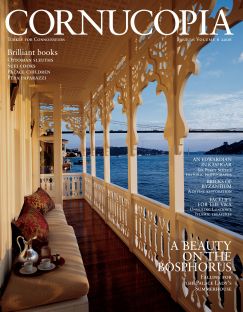
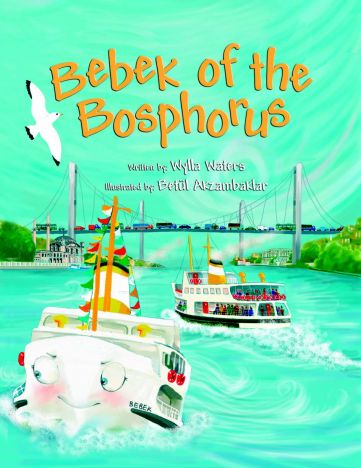

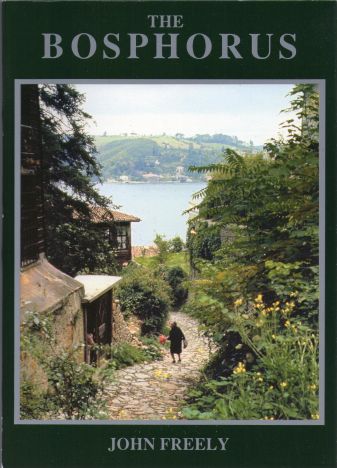
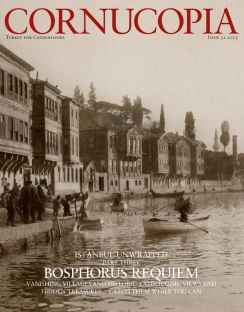
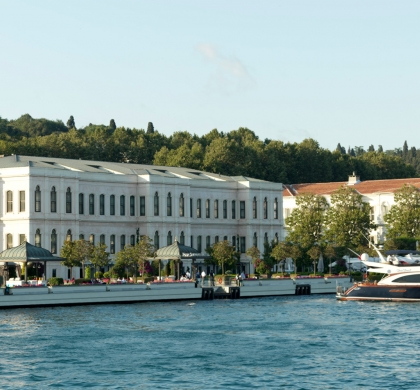
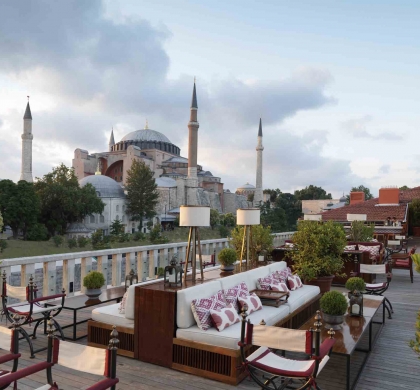
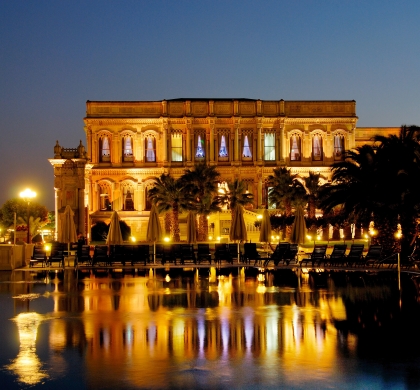
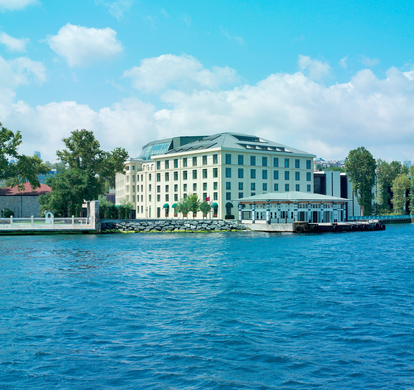
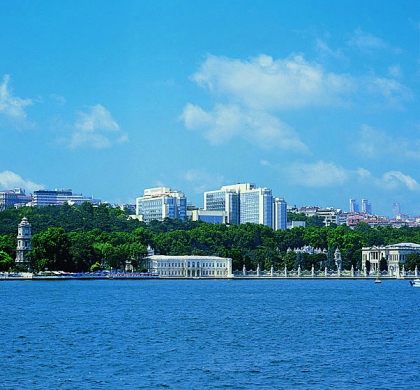
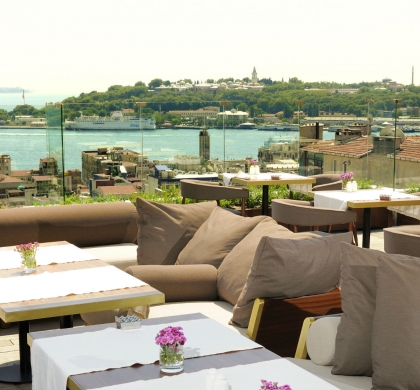
 Issue 66, December 2023
Turkey’s Centenary Issue
Issue 66, December 2023
Turkey’s Centenary Issue
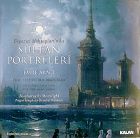
The Prague Symphony Chamber Orchestra with Cihat Askin, violin. Directed by Emre Araci and produced by Ateş Orga

Cornucopia works in partnership with the digital publishing platform Exact Editions to offer individual and institutional subscribers unlimited access to a searchable archive of fascinating back issues and every newly published issue. The digital edition of Cornucopia is available cross-platform on web, iOS and Android and offers a comprehensive search function, allowing the title’s cultural content to be delved into at the touch of a button.
Digital Subscription: £18.99 / $18.99 (1 year)
Subscribe now